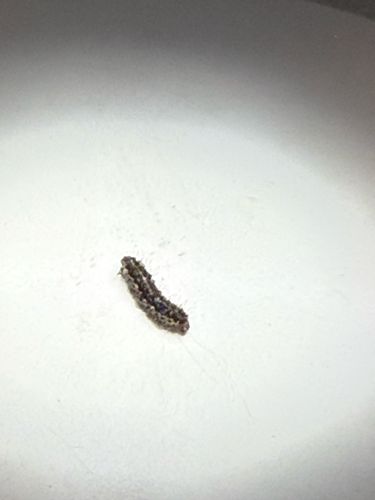Cutworm (larva)
Scientific Name: Noctuidae (larvae)
Order & Family: Lepidoptera, Noctuidae
Size: Typically 1 to 2 inches (2.5 to 5 cm) long as larvae.

Natural Habitat
Found in soil or at the base of plants, often in gardens, agricultural fields, and grasslands.
Diet & Feeding
Herbivorous. They feed on young plants, chewing through stems at or just below the soil surface, or feeding on leaves and roots.
Behavior Patterns
Cutworms are nocturnal, feeding at night and hiding underground or under debris during the day. When disturbed, they often curl into a C-shape. They overwinter as larvae or eggs and pupate in the soil before emerging as adult moths.
Risks & Benefits
Potential risk: Cutworms are significant agricultural pests, causing damage to a wide variety of vegetable and field crops by cutting down young plants. Benefits: As with all insects, they can be a food source for other animals (birds, predatory insects) and play a role in soil aeration as they tunnel.
Identified on: 10/2/2025